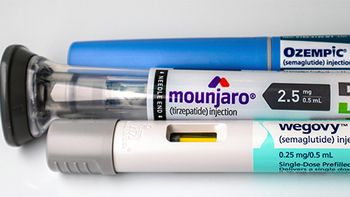
Supply Chain
Latest News
Latest Videos

More News

In the second part of her video interview with Pharma Commerce Editor Nicholas Saraceno, Jenna Dale, director of client relations at Cencora, explains the challenges associated with meeting the FDA’s 2025 CGT forecasted approval goal.

In the final part of his video interview with Pharma Commerce Editor Nicholas Saraceno, Alex Guillen, global pharma and life sciences director at Tive, shares how the development of technology will help bolster the pharma logistics industry.

In the first part of his video interview with Pharma Commerce Editor Nicholas Saraceno, Jim Shehan, chair of the FDA regulatory practice at Lowenstein Sandler, describes what the approach of pharma companies should be amid the latest/pending tariffs imposed on Canada, Mexico, and China, along with their potential impact on the pharma supply chain.

The company cites a decline in sales and excess inventory as the main contributing factors.

In the first part of her video interview with Pharma Commerce Editor Nicholas Saraceno, Jenna Dale, director of client relations at Cencora, shares how the imposed/pending trade tariffs impact pharma manufacturers.

However, the 10% tariff on imports from China went into effect this morning, with the nation imposing several of it own.

A report offers a comprehensive benchmarking and assessment of pharmaceutical manufacturer engagement with specialty pharmacies.

In the third part of his video interview with Pharma Commerce Editor Nicholas Saraceno, Alex Guillen, global pharma and life sciences director at Tive, explains what needs to be done in the United States in order to increase manufacturing output.

What implications will these have on the pharma supply chain?

In the second part of his video interview with Pharma Commerce Editor Nicholas Saraceno, Alex Guillen, global pharma and life sciences director at Tive, describes the highlights of a recent pharma supply chain security and visibility report that his company released.

Can monitoring these dispensed Rxs via online search behavior help predict future GLP-1 use in the United States?

In the first part of his video interview with Pharma Commerce Editor Nicholas Saraceno, Alex Guillen, global pharma and life sciences director at Tive, outlines the technological obstacles that lie ahead for the industry this year.

Donald Prentiss discusses the value of these pharmacies, especially during shortages.

In the final part of her video interview with Pharma Commerce Editor Nicholas Saraceno, Amanda Salindong, associate director of channel & distribution at Alnylam Pharmaceuticals, shares the elements that manufacturers should consider when selecting a 3PL.

The investment not only moves along the company’s efforts in advancing clinical studies, but also opens up 700 new jobs for the Greater Toronto area.

In the final part of his video interview with Pharma Commerce Editor Nicholas Saraceno, Donald Prentiss, founder and CEO, Qualthera, describes the importance of the patient within the pharma supply chain.

In the fourth part of his video interview with Pharma Commerce Editor Nicholas Saraceno, Donald Prentiss, founder and CEO, Qualthera, discusses the origins of the compounding pharmacy, including what it seeks to accomplish.

Despite challenges surrounding communication overload, drug shortages, and cybersecurity risks, this term is revolutionizing medication management and patient care through the use artificial intelligence and predictive forecasting.

In the second part of his video interview with Pharma Commerce Editor Nicholas Saraceno, Donald Prentiss, founder and CEO, Qualthera, describes compounding pharmacies’ efforts in tackling the tirzepatide shortage, and dispels the notion that commercialized and compounded drugs are competing with one another.

In the first part of his video interview with Pharma Commerce Editor Nicholas Saraceno, Donald Prentiss, founder and CEO, Qualthera, comments on the role that compounding pharmacies play in the pharmaceutical supply chain from a macro perspective.

In the final part of his video interview with Pharma Commerce Editor Nicholas Saraceno, Mark Jara, founder and CTO, RxS, comments on how personalization could play a role in the future development of eSampling platforms.

The license agreement will feature an upcoming Phase III trial and—depending on results—the development, manufacturing, and commercialization of evenamide as a potential treatment option.

In the third part of his video interview with Pharma Commerce Editor Nicholas Saraceno, Mark Jara, founder and CTO, RxS, shares his inspiration behind designing SampleHub.

In the second part of his video interview with Pharma Commerce Editor Nicholas Saraceno, Mark Jara, founder and CTO, RxS, explains the value of an online portal that offers logistics flexibility.

In the first part of his video interview with Pharma Commerce Editor Nicholas Saraceno, Mark Jara, founder and CTO, RxS, describes the progression of the sample distribution process.














